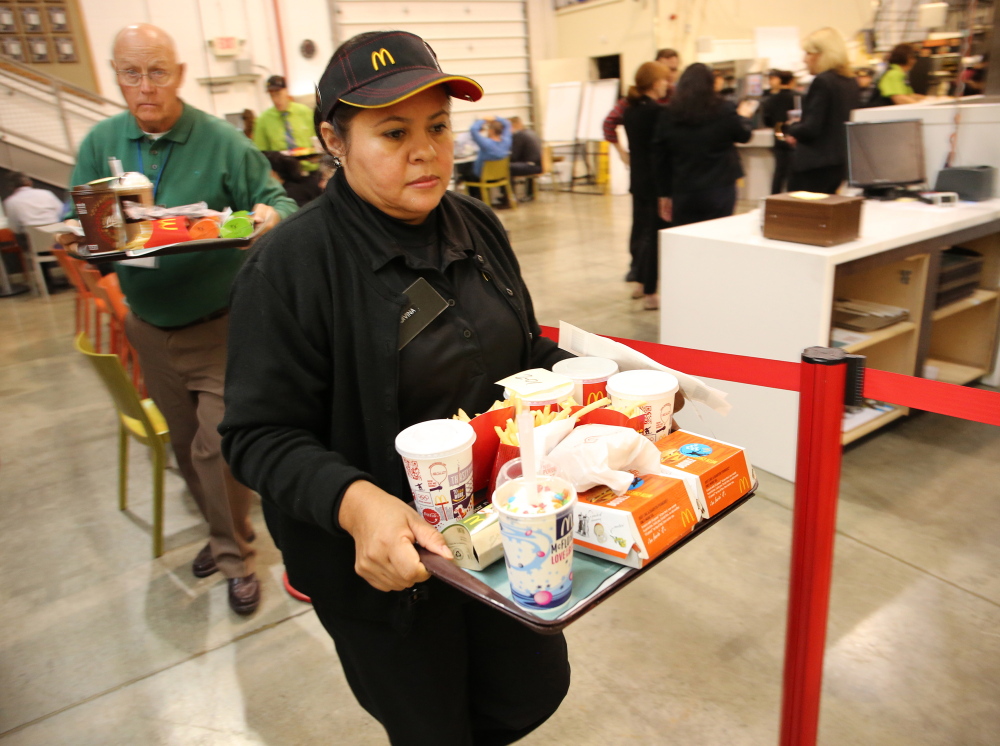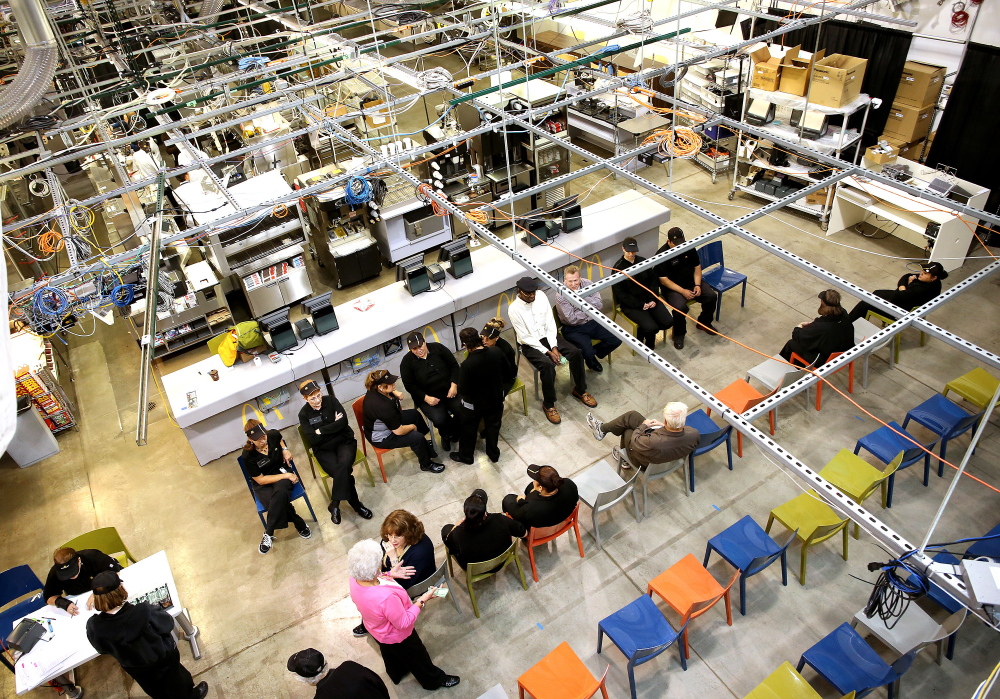Inside this nondescript warehouse some 30 minutes from McDonald’s suburban Chicago headquarters, uniformed crew members cook burgers, sling fries and hand food to customers.
But here, cashiers accept fake money. Workers and customers wear tracking chips to record their movements. And customers mimic going through the drive-thru in plastic chairs, not cars.
Welcome to the Innovation Center, where the world’s largest fast-food operator studies, dissects and tweaks current routines as well as proposed ideas that could quicken the operations at some 34,000 McDonald’s restaurants worldwide.
The center is far enough from McDonald’s headquarters that it can run on its own, yet close enough for interaction when needed, said Laurie Gilbert, a 22-year McDonald’s veteran who is vice president of restaurant innovation.
“There was a very intentional decision made not to have it be right there, so we could create a bit of a different culture, have a safe place to experiment and learn,” Gilbert said. “Make no mistake, it’s McDonald’s through and through, you can feel it. And yet, with our own flavor.”
Opened in 2001, the Innovation Center brings together a variety of players, from engineers, researchers and designers to visiting vendors and franchisees, as they work to improve the burger giant’s service.
The mission is particularly important now because McDonald’s is grappling with its longest stretch of declining sales at long-standing restaurants in more than a decade. Shortening service times, ensuring that kitchens and crew members are ready to prepare new foods and drinks, and updating the ordering process are key to that goal.
Most days, at least one of the mock restaurants housed in the warehouse buzzes like an actual McDonald’s during the breakfast, lunch or dinner rush.
Every move the crew takes can be studied, by people watching from inside the kitchen, across the counter, from an observation deck above, or later, by reviewing video. Those tracking tags worn by workers and customers log how long it takes an order to make its way through the kitchen, through the mock drive-thru or across the counter.
Customers, played by retirees or students, don’t always choose their meals. Many times, orders are re-created from a previous day at an actual restaurant.
“The focus is really on what customers are looking for,” said Melody Roberts, McDonald’s senior director of experience design innovation, noting that, consumer preference for custom drinks, for example, would shape the way kitchen space is allocated.
Though McDonald’s tinkers with its food in facilities around the world, the 38,000-square-foot Innovation Center is the only place where restaurant setup is worked on in such detail.
In the 13 years that the current center has been operating, it has had some changes, including the addition of more kitchens. A second floor was added with the observation deck, desk space and meeting rooms meant to inspire, named after innovators such as Leonardo da Vinci and Steve Jobs. About 80 crew members and five managers work in the warehouse’s test restaurants.
Ed Bridgman, senior director of innovation and operations, got his start working at a McDonald’s restaurant 40 years ago. Together, he and others at the center hold 49 patents in areas such as kitchen operating systems and drive-thrus, dozens of which are displayed on the building’s walls.
“I’ve been fortunate to go to some large manufacturing innovation centers,” Bridgman said. “This one is much more interactive and trying to deal with, from my opinion, a much more complicated set of environments.”
Take, for example, the temporary restaurant for the 2012 Summer Olympics. Bridgman and others worked on how many registers it should have, along with kitchen production, beverage machinery and space for ordering.
“On any given time of day when it was operating, there may have been 300 to 400 people operating it and several thousand people visiting,” Bridgman said.
Some pieces of equipment can take several years to create and test. Processes are tweaked multiple times before they make their way into restaurants. Other proposed changes don’t make it out of the building.
A few years ago, McDonald’s toyed with a dispenser that would put the right number of Chicken McNuggets into a basket before cooking, rather than having a worker count them out.
“The nugget dispenser worked, but at the end of the day, it didn’t really make our crew’s life that much easier,” Gilbert said. That project, is “on the shelf.”
So, too, is a fully automated fryer for french fries. It “proved a little too sophisticated for the restaurants,” but parts of it made their way into fry stations around the world, she said.
Send questions/comments to the editors.




Success. Please wait for the page to reload. If the page does not reload within 5 seconds, please refresh the page.
Enter your email and password to access comments.
Hi, to comment on stories you must . This profile is in addition to your subscription and website login.
Already have a commenting profile? .
Invalid username/password.
Please check your email to confirm and complete your registration.
Only subscribers are eligible to post comments. Please subscribe or login first for digital access. Here’s why.
Use the form below to reset your password. When you've submitted your account email, we will send an email with a reset code.